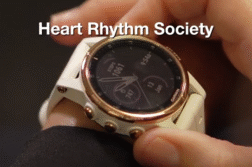RALEIGH, N.C. (Ivanhoe Newswire) – Surgeons at Duke University Hospital performed the world’s first combination heart transplant and thymus tissue implantation and now, a year later, their 18-month-old patient is a growing, thriving medical miracle.
Little Easton Sinnamon came into the world last year with a broken heart, having six defects in all, that were too severe for doctors to fix.
Easton’s mother, Kaitlyn Sinnamon says, “If we didn’t go the transplant route, he wouldn’t be here today.”
Doctors also determined that Easton had an immune system that wasn’t working.
“We found out that he didn’t have T cells. T cells are something that are produced by the thymus. They helped to fight infection,” Dr. Joseph W. Turek, MD, PhD, MBA, Chief of Pediatric Cardiac Surgery at Duke University, explains.
Dr. Turek and his team proposed an investigational procedure that had been pioneered at Duke but never performed in humans before – a combination heart transplant and implantation of cultured thymus tissue. Doctors believed the implanted thymus cells would reduce the need for anti-rejection drugs. Kaitlyn says it wasn’t a difficult choice for their family to make, since the thymus implantation posed little risk to their son.
“If you do it and it works, you’re changing how transplants are done worldwide,” Kaitlyn emphasizes.
When Easton was six months old, a donor heart became available. Surgeons also sent thymus tissue from the same donor to a lab for processing. The heart transplant was first.
Dr. Turek adds, “We went back to the operating room two weeks later, and we did the cultured thymic tissue implantation.”
Easton’s doctors and family noticed the difference immediately.
“He was no longer this kind of bluish, grayish color, not getting enough oxygen,” Kaitlyn says.
Easton left Duke Hospital after seven months, growing stronger at home. He is not only celebrating his first birthday, but another one-year milestone.
Kaitlyn mentions, “We call it his heart birthday, his ‘heart-versary’. August 6th was when he received his transplant.”
The heart transplant and thymus tissue implant were cleared by the FDA under an expanded access application. Easton’s mother, Kaitlyn, tells us doctors have just started reducing one of his anti-rejection medications, as doctors initially hoped they would be able to do. The anti-rejection medications can be toxic to organs, especially the kidneys.
Contributors to this news report include: Cyndy McGrath, Producer; Kirk Manson, Videographer; Roque Correa, Editor.
To receive a free weekly e-mail on medical breakthroughs from Ivanhoe, sign up at: http://www.ivanhoe.com/ftk
MEDICAL BREAKTHROUGHS
RESEARCH SUMMARY
TOPIC: FIRST-IN-THE-WORLD HEART AND THYMUS TRANSPLANT SAVES EASTON
REPORT: MB #5117
BACKGROUND: Congenital heart defects (CHDs) are the most common type of birth defect. As medical care and treatment have advanced, babies with a CHD are living longer and healthier lives. CHDs are present at birth and can affect the structure of a baby’s heart and the way it works. They can affect how blood flows through the heart and out to the rest of the body. CHDs can vary from mild (such as a small hole in the heart) to severe (such as missing or poorly formed parts of the heart). Nearly one in 100 babies (about one percent or 40,000 babies) is born with a heart defect in the United States each year. About one in 4 babies born with a heart defect (about 25 percent) has a critical CHD. Some heart defects don’t need treatment or can be treated easily.
(Sources: https://www.cdc.gov/ncbddd/heartdefects/facts.html
DIAGNOSING: In some children, symptoms that appear during infancy or even later may be the first sign of a problem. Newborns with a congenital heart defect may have symptoms such as irritability or inconsolable crying, rapid breathing, excessive sweating, and difficulty feeding and gaining weight. Symptoms in babies occur when the blood does not receive enough oxygen, or the heart cannot pump efficiently. Symptoms often include cyanosis, in which the skin appear bluish; fluid retention in the chest; a heart murmur, which the doctor can hear with a stethoscope; or an absent or rapid pulse. Decreased blood flow to the arms and legs may make a baby’s skin abnormally pale and cool. In older children and adolescents, congenital heart defects may affect growth and development and produce weakness, fatigue, and shortness of breath during normal activities and exercise.
NEW TECHNOLOGY: “HeartFlow is a new technology that makes the process of being tested for heart problems easier for patients,” Dr. Cecilia Hirsch, MD, a cardiologist at Banner Health’s North Colorado Medical Center, said. “It can provide information about the blood flow in a patient’s heart and determine whether a patient needs to continue with more invasive heart tests based on the images gathered.” If the CT angiogram shows between 30 to 70 percent narrowing of the artery, the images are sent to HeartFlow for a detailed analysis. HeartFlow analysis helps determine which patients would need to have an invasive coronary angiogram or cardiac catheterization done. Studies have shown that in cases where HeartFlow is used, 45 to 50 percent of patients did not need to have an invasive procedure done, which avoids having unnecessary procedures. “HeartFlow is recommended by physicians to patients that are experiencing symptoms related to chest discomfort, tightness in their chest or other signs of possible heart problems,” Dr. Hirsch said.
FOR MORE INFORMATION ON THIS REPORT, PLEASE CONTACT:
Stephanie Lopez
(919) 724-5934
If this story or any other Ivanhoe story has impacted your life or prompted you or someone you know to seek or change treatments, please let us know by contacting Marjorie Bekaert Thomas at mthomas@ivanhoe.com



